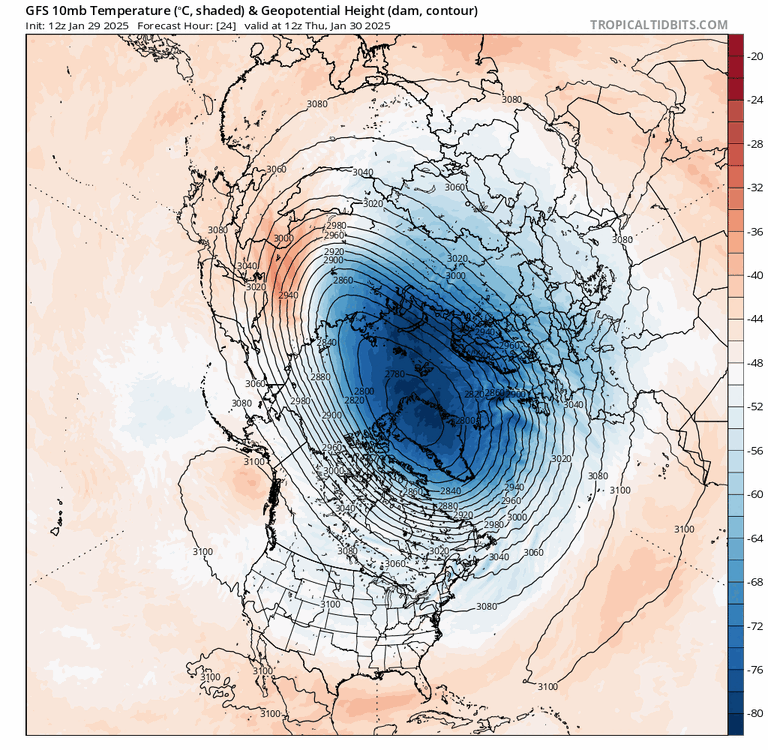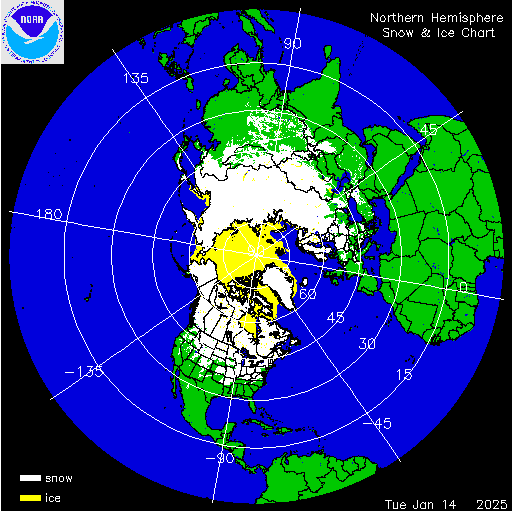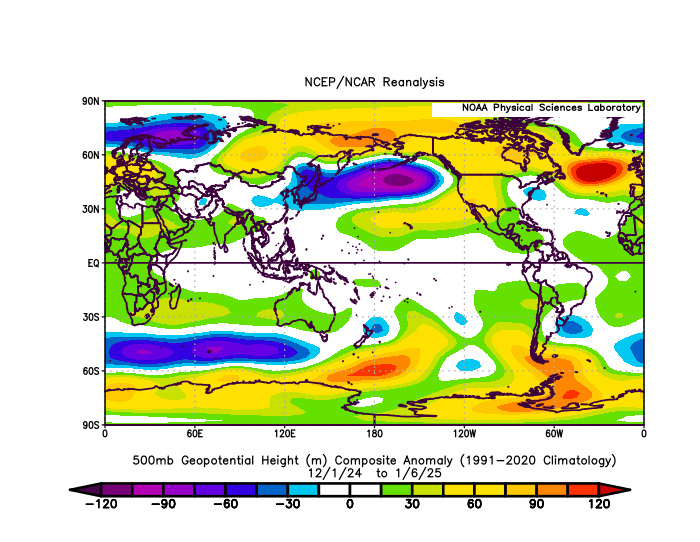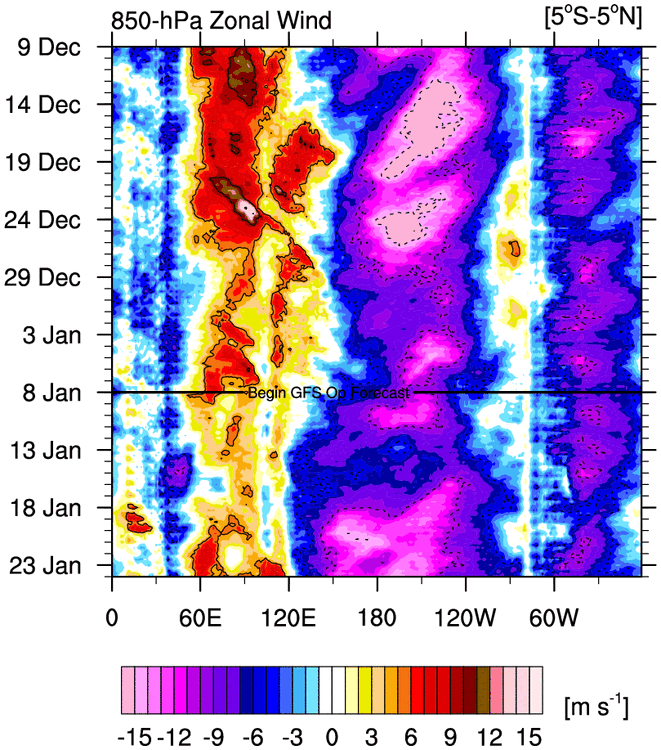
so_whats_happening
Meteorologist-
Posts
1,442 -
Joined
-
Last visited
Content Type
Profiles
Blogs
Forums
American Weather
Media Demo
Store
Gallery
Everything posted by so_whats_happening
-
2024-2025 La Nina
so_whats_happening replied to George001's topic in Weather Forecasting and Discussion
Sorry for the late response I will have to take a look at the paper when I get a free chance then. -
2024-2025 La Nina
so_whats_happening replied to George001's topic in Weather Forecasting and Discussion
I still do not understand why everyone is so hellbent on this being a SPV split or not. -
2024-2025 La Nina
so_whats_happening replied to George001's topic in Weather Forecasting and Discussion
My god im sorry I even posted that there would be warming event in the strat. The twitter campaign out in full force cant even have a sensible discussion anymore. -
2024-2025 La Nina
so_whats_happening replied to George001's topic in Weather Forecasting and Discussion
The last thing I will add the only 500mb tropospheric pattern that has seemingly locked so far this year has been the Pacific pattern. The European side has been extremely transient, unfortunately, so repeated attacks have been few and far between but luckily for us the EPO has managed to help us out quite a bit even with a non consistent +PNA pattern. We do not know yet whether the European side will help aid in this event yet or if it will once again be transient. -
2024-2025 La Nina
so_whats_happening replied to George001's topic in Weather Forecasting and Discussion
We have been able to propagate down here and there so far this year but with the SPV being so above average it would take a rather significant event to help with downward propagation and be meaningful other than another probably 1-2 week winter like pattern that evolves. -
2024-2025 La Nina
so_whats_happening replied to George001's topic in Weather Forecasting and Discussion
These have all been tropospheric driven events meaning the troposphere reacted first most likely due to tropical forcings that took place. The SPV reacted as such with a weakening the issue is the SPV is strong for this time year so it could not weaken significantly so the pattern was not able to lock in like one would typically hope so we had our cold spell and reverted quickly back. The warming and weakening of the SPV is a reaction to what is going on down below now if the events taking place below are quite strong the better it translates to the SPV weakening and creating potentially a longer lasting effect into the 500mb pattern. We can connect but it doesn't always mean it will last especially with how strong the SPV is right now. This event coming up will probably be no different where initially the pattern will be driven from what takes place at 500mb the subsequent warming will ensue in the lower to upper stratosphere and maybe this could significantly disrupt the SPV going forward considering in about a month we start to talks of final warmings. Now will this make the pattern last probably not but as of now there seems to be quite a shakeup showing up that should start around mid February and provide the last little bit of winter like pattern for many areas. Edit: Forecast right now for this eddy heat flux is rather impressive so something may actually try to come of this. vtn_50_2024_merra2.pdf -
2024-2025 La Nina
so_whats_happening replied to George001's topic in Weather Forecasting and Discussion
I really don't have the time to get into a back forth about something that can be read through many journals. You realize it takes time for it to translate vertically right? This was not an instantaneous event nor was it ever advertised to be. Yes there is always a possibility that the east doesn't get significantly colder never mentioned once in my post that it would get significantly colder because of the warming event, maybe you inferred it differently because I said winter-like pattern? -
2024-2025 La Nina
so_whats_happening replied to George001's topic in Weather Forecasting and Discussion
I think we need to stop expecting every single warming event to be a major SSW I don't know why everyone seems to think that a warming event must be a reversal for us to get a winter like pattern. These reversals happen on average 2-3 times a decade based on averages, sometimes more sometimes less. A weakening of the SPV was enough to bring us some impressive cold conditions without a reversal. A reversal just extends the amount of time one of these events lock the pattern but it doesn't need to reverse in order to cause a changeup. -
2024-2025 La Nina
so_whats_happening replied to George001's topic in Weather Forecasting and Discussion
I do like that we saw a large spike in the MJO phase 3 this is usually a precursor to these type of events to unfold. From the looks of it we have a weakening MJO wave as it pushes into 4/5/6 and eventually 7 by about mid February. The key will be how quickly all this moves through the phases, I have a feeling we may start to halt MJO progression as we get to phase 6 and eventually 7 but how quickly we move through 4/5 will how warm the east gets. The active storm track that looks to set up may create quite the boundary across the country with the SE to Texas rather warm and mid atlantic ohio valley battling it out. Lets see what happens, one more bout of winter could bring us awfully close to seasonal average (maybe above depending on quite a few factors). -
2024-2025 La Nina
so_whats_happening replied to George001's topic in Weather Forecasting and Discussion
Looks like on the horizon (to about hr 240) we have yet another solid warming event taking shape in the stratosphere. We can not seem to link up both the Atlantic and Pacific ridging patterns so gotta take what we can get. This may on the level of what we saw about a month ago placement is a little off compared to the last go about but have to see how it eventually translates to the surface. Usually this time of year these connections start to become quicker in the overall affect to the 500mb pattern, I believe Stormchaserchuck may have mentioned it once or twice before. You know something is up when surface temps on the Euro in all high latitude locations start to show +20 to +30 anomalies. It looks as though the Euro may actually be trying to do a bottom up split of the SPV one caveat here is it may not fully translate to about 10mb splitting which is fine because it can still disrupt the pattern at 500mb if such a response occurs. Lets see how it translates over the next week. This would lead to a second half of February into early March not being as canonical. Everything seems to be going according to plan though where we have averageish temps to finish out the last week of January and the first week of February average to above average. Depending on storm track some areas do look to have a 1 day spike in temps to well above average but to pinpoint when and where at this time is a tough call. -
2024-2025 La Nina
so_whats_happening replied to George001's topic in Weather Forecasting and Discussion
Such a shame to read this but this sounds like a training issue in measuring. As a weather observer, we go through training every season/ monthly (depending on what training is needed) to refresh what may come our way. Sounds to me like they did an end of system measurement versus an hourly which would offer a completely different outcome for totals. This is an SWO/Contractor issue that will be looked into because someone will be on the line for such erroneous measurements. This tends to be an issue that comes up in areas that don't experience certain weather conditions. Since the deep south typically does not experience a lot of wintry precip and if this happens to be a newer individual that would make sense. Just like further north around here we get thunderstorms but not often hail or tornadic systems so the training is important. Also as another aside the equipment being used is very old in most locations with no plans of upgrades anytime soon, if they upgrade it would be AI generated (whenever this comes about) unless it is absolutely necessary to upgrade. Hope it gets resolved properly. Edit: just saw the part it is unmanned that would mean either two things it would be a local EMS location that undertakes that role which is probably not properly trained to do procedures like this or it was a tower individual at that location doing the obs which they should know at least a little bit better but can't get on them as they are ATC not weather. This may be an issue that arises down the road if cuts do at some point come to airport weather programs (we will see what happens). If there was no auto during those times it was being monitored by someone which most likely would have been ATC then. -
2024-2025 La Nina
so_whats_happening replied to George001's topic in Weather Forecasting and Discussion
Yea with this snowfall yesterday we are sitting at about a foot so far this season which is a little less than half of our yearly climo snowfall and so far on the month to month we are right near average amounts. -
2024-2025 La Nina
so_whats_happening replied to George001's topic in Weather Forecasting and Discussion
It does look like we are finally getting poleward movement of the Scandi ridging pattern the one thing we have been missing. This is key in allowing a potential split SPV pattern down the road. Lets see what happens. -
2024-2025 La Nina
so_whats_happening replied to George001's topic in Weather Forecasting and Discussion
I feel like people see -PNA and instantly think it is all over. Not the case when you have the PV on this side of the globe, now if the PV was on the weaker side over here and more pronounced over into Russia/Siberia totally different story. This should help keep the SE Ridge/ WAR (whichever you like to call it) at bay. This would offer up a country wide cold outbreak with the deeper values into the mountains that spill east over time. I do still expect a brief time period of average temps maybe even slightly above average to occur into the first week of February as the pattern we have had relaxes a bit and sets up into this but not seeing a torch event right now. Im excited to get more precip thrown into the region and have the chances go up of potential snow then what we have been having. We need the precip as this is supposed to be one of the wetter times of the year even if it does fall as rain, unfortunately it may cause a lot of flooding if it is indeed rain since the ground would be a solid brick and most rivers and lakes are pretty frozen over at this time before the cold outbreak. -
2024-2025 La Nina
so_whats_happening replied to George001's topic in Weather Forecasting and Discussion
BTW some forecasts are already showing monday lows getting to near 0 in my area. Tuesday and wednesday morning potentially below 0? I think it will moderate a bit but single digits will be some of the coldest air we have seen in a bit. Highs in the upper teens, with some showing us barely getting above 15 as a high. -
2024-2025 La Nina
so_whats_happening replied to George001's topic in Weather Forecasting and Discussion
Looks to me like SWFE if you can get on the cold side it would be a beautiful setup. -
2024-2025 La Nina
so_whats_happening replied to George001's topic in Weather Forecasting and Discussion
Social media is killing you man, take a a step away. -
2024-2025 La Nina
so_whats_happening replied to George001's topic in Weather Forecasting and Discussion
Ill take this whatever winter pattern. Have had snow on the ground (~1") since January 3rd just refreshed with the last two systems 3" and 1.5" bringing our year total so far to about 7" on the season. This is the longest we have had snow on the ground in quite some time, yea sure it is not feet of snow but snow regardless. Still looking for one 12"+ system to end my season and Ill happily move on maybe something will get sniffed out here within the next 2 weeks. My heating bill is saying wtf is going on right now for how 'mundane' this cold pattern is. -
2024-2025 La Nina
so_whats_happening replied to George001's topic in Weather Forecasting and Discussion
This is impressive to say the least. Definitely did not expect to see this 500mb look as we approach the halfway mark through the winter season. -
2024-2025 La Nina
so_whats_happening replied to George001's topic in Weather Forecasting and Discussion
If the trade winds forecasted continue to show west of the dateline being more anomalous than normal versus over 3 and 3.4 this will certainly keep pushing the 'Nina' waters further and further west. This will ultimately also allow for sinking air to start being more prevalent around the eastern portions of the Maritime Continent (around 5/6/7 of the MJO Phase) and a less concentrated region of lift over phase 4 region like we saw November into December. We would start to have a dual or split lifting region of 1/2/3 showing up and potentially avoiding the dreaded 4/5/6. This of course is still a few weeks out but we should start to approach close to phase 3 by the last week of January after that I am not so certain on a 4/5 swing as we go into February as many seem to be so keen on. I personally see us to have peaked with this Nina at this point unless we get some rogue constructive interference in the next 2 weeks showing up, which I have my doubts. I think what likely happens is the subsurface we currently see just maintains what we currently have and lets it slowly fade over time. These are just some thoughts popping about in my head for what could be the next 3-4weeks. On a side note this would certainly be a noteworthy situation if we somehow ended the season below average snowfall wise around here yet ended up with more snow than Boston... -
Arctic Sea Ice Extent, Area, and Volume
so_whats_happening replied to ORH_wxman's topic in Climate Change
Thank You! -
Arctic Sea Ice Extent, Area, and Volume
so_whats_happening replied to ORH_wxman's topic in Climate Change
Anyone have sea ice thickness maps and numbers everything I have bookmarked took a crap and is not accessible. -
2024-2025 La Nina
so_whats_happening replied to George001's topic in Weather Forecasting and Discussion
Within 240 hours now is usually my go to for a strong possibility of this occurring especially with it being the stratosphere not a whole lot of fluctuation happens at that layer within 5-7 days. 10 days you can get some minor changes in position and intensity but this is looking promising. This would throw ideas of a really warm February off a bit considering the connection of strat to 500mb.









